Beautiful Foxglove Varieties to Transform Your Garden
Published: October 28, 2025 at 11:02:46 PM UTC
Foxgloves (Digitalis) are among the most enchanting flowers you can grow in your garden. With their tall, elegant spires covered in tubular blooms, these cottage garden classics create vertical drama and attract pollinators like bees and hummingbirds.
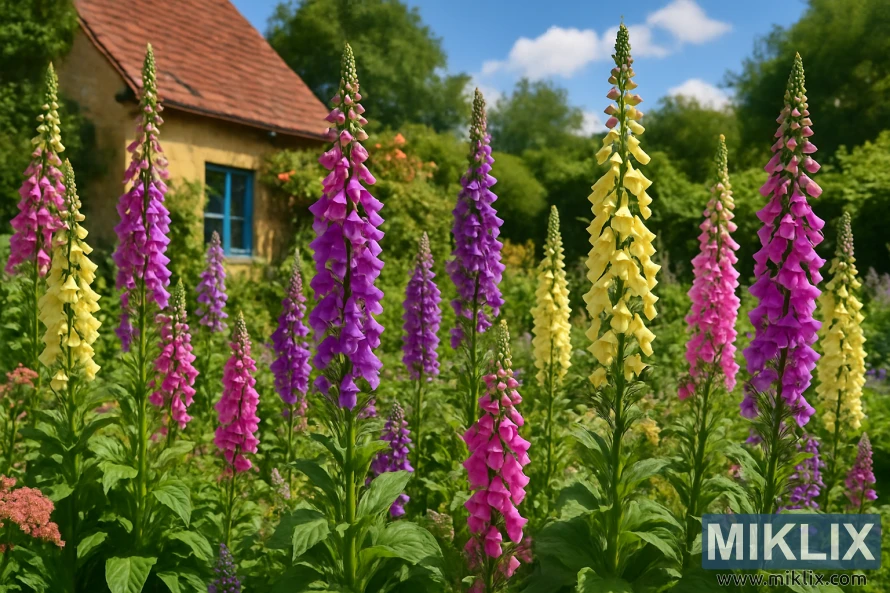
From the classic purple-pink of common foxglove to unusual apricot and white varieties, there's a foxglove to suit every garden style. In this guide, we'll explore the most beautiful foxglove varieties and how to grow them successfully.
About Foxgloves: Beauty with a Warning
Foxgloves are a diverse group of flowering plants, with the most widely recognized being the popular and extremely showy Digitalis purpurea. These plants are native to Europe, Asia, and northern Africa and are beloved for their alluring spires of tube-shaped blossoms that bloom in late spring and early summer.
While foxgloves add undeniable charm to gardens, it's important to note that all parts of these plants contain cardiac glycosides that are highly toxic if ingested. Always exercise caution when growing foxgloves around children and pets, and wear gloves when handling them.
Important Safety Note: All foxglove varieties contain digitoxin, a compound that affects heart rhythm and can be fatal if ingested. Never consume any part of the plant and keep away from children and pets. Wear gloves when handling to avoid skin irritation.
Despite this caution, foxgloves remain popular garden plants due to their spectacular beauty, ability to thrive in partial shade, and their appeal to pollinators. They're perfect for cottage gardens, woodland settings, and mixed perennial borders.
Foxglove Growing Requirements
Light and Soil
Most foxglove varieties perform best in partial shade but can tolerate full sun in cooler climates. They prefer rich, moist, well-drained soil with plenty of organic matter. In warmer regions, protection from afternoon sun is beneficial.
Water Needs
Foxgloves require consistent moisture, especially during their first growing season and when in bloom. Water deeply when the top inch of soil feels dry, but avoid waterlogging which can lead to root rot.
Hardiness and Lifecycle
Most foxglove varieties are hardy in USDA zones 4-9, though this varies by species. Common foxglove (D. purpurea) is typically biennial, forming a rosette of leaves in the first year and flowering in the second before setting seed and dying. However, many varieties self-seed readily, creating the appearance of perennials.
Maintenance
Deadhead spent flowers to encourage additional blooming and prevent excessive self-seeding. Cut back flower stalks after blooming. In colder regions, apply a light mulch around the base of plants in late fall for winter protection.
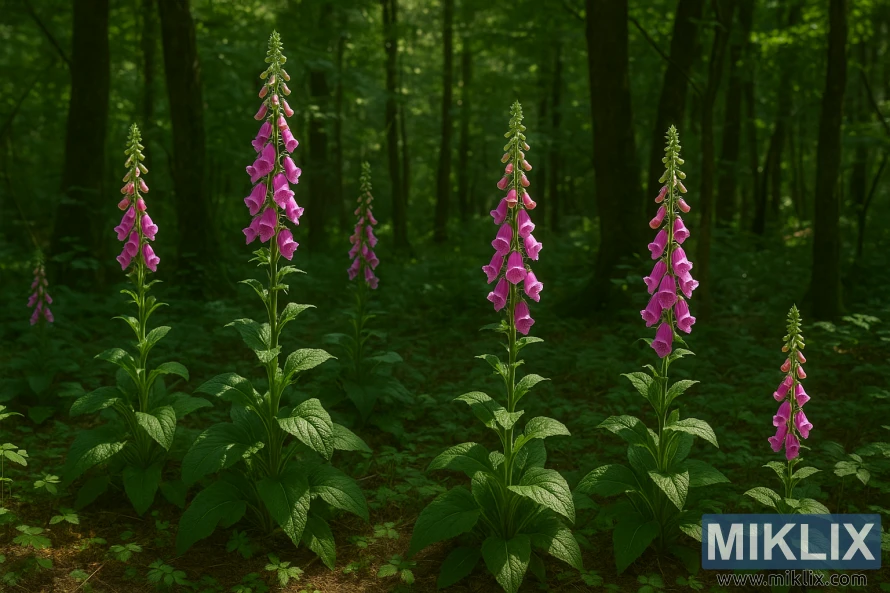
The Most Beautiful Foxglove Varieties
From classic purples to unusual apricots and whites, here are the most stunning foxglove varieties to consider for your garden. Each offers unique characteristics in height, color, and growing habits.
1. 'Sutton's Apricot' (Digitalis purpurea 'Sutton's Apricot')
One of the most sought-after foxglove varieties, 'Sutton's Apricot' features delicate peachy-pink blooms that fade to buff and cream as they age. The soft color makes it a versatile addition to many garden color schemes.
- Height: 3-5 feet
- Spread: 1-2 feet
- Bloom Time: Late spring to early summer
- Hardiness: Zones 4-9
- Special features: Unique apricot color, subtly speckled throats
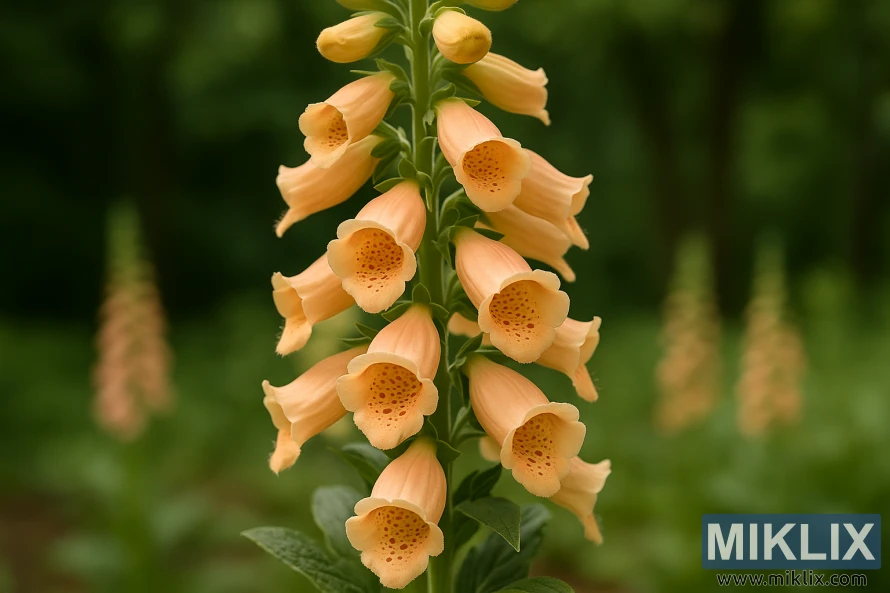
2. 'Alba' (Digitalis purpurea f. albiflora)
The pure white form of common foxglove creates a stunning visual impact, especially in evening gardens where the bright blooms seem to glow in twilight. Some specimens feature subtle purple speckles in the throat, adding delicate detail to the pristine flowers.
- Height: 3-5 feet
- Spread: 1.5-2 feet
- Bloom Time: May to June
- Hardiness: Zones 4-8
- Special Features: Pure white blooms, excellent for evening gardens
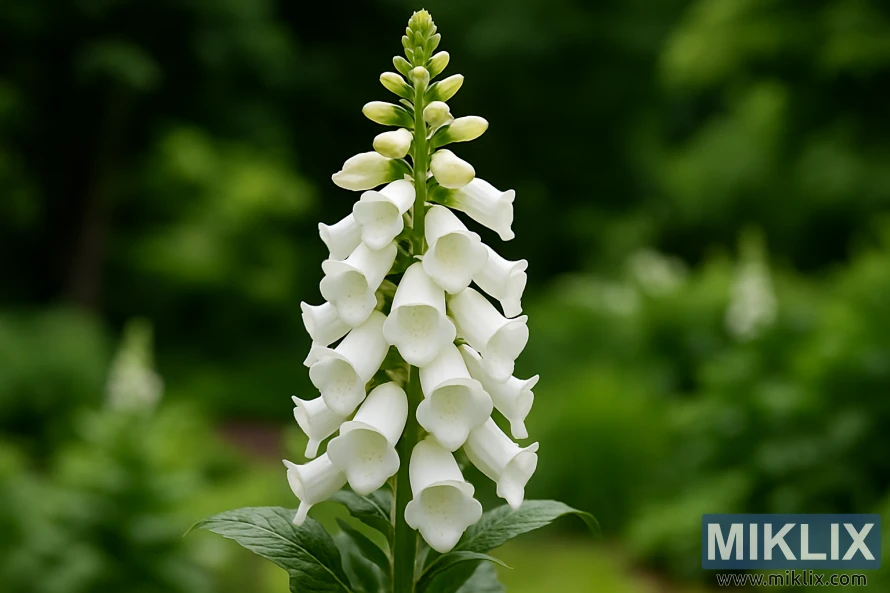
3. 'Candy Mountain' (Digitalis purpurea 'Candy Mountain')
Unlike traditional foxgloves whose flowers face downward, 'Candy Mountain' features upward-facing blooms in a vibrant rose-pink color with heavily speckled throats. This unique characteristic makes it easier to appreciate the beautiful interior markings of each flower.
- Height: 3-4 feet
- Spread: 1-2 feet
- Bloom Time: Early to midsummer
- Hardiness: Zones 4-9
- Special Features: Upward-facing flowers, heavily speckled throats
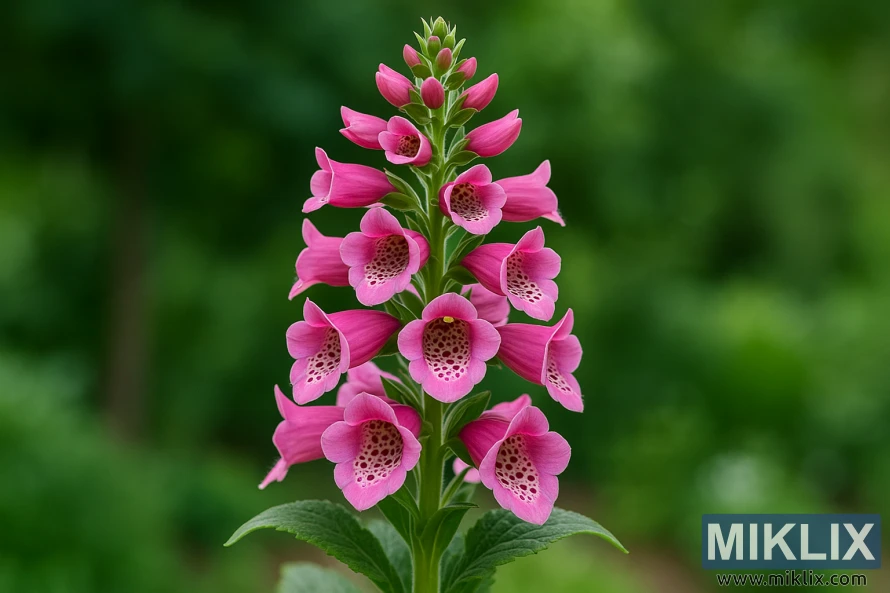
4. Strawberry Foxglove (Digitalis × mertonensis)
A stunning hybrid between D. purpurea and D. grandiflora, the Strawberry foxglove features large, bell-shaped flowers in a rich strawberry-pink color. This variety is more reliably perennial than common foxglove, often blooming for several years.
- Height: 2-3 feet
- Spread: 1-2 feet
- Bloom Time: Late spring to early summer
- Hardiness: Zones 4-8
- Special Features: Rich strawberry color, more perennial than biennial
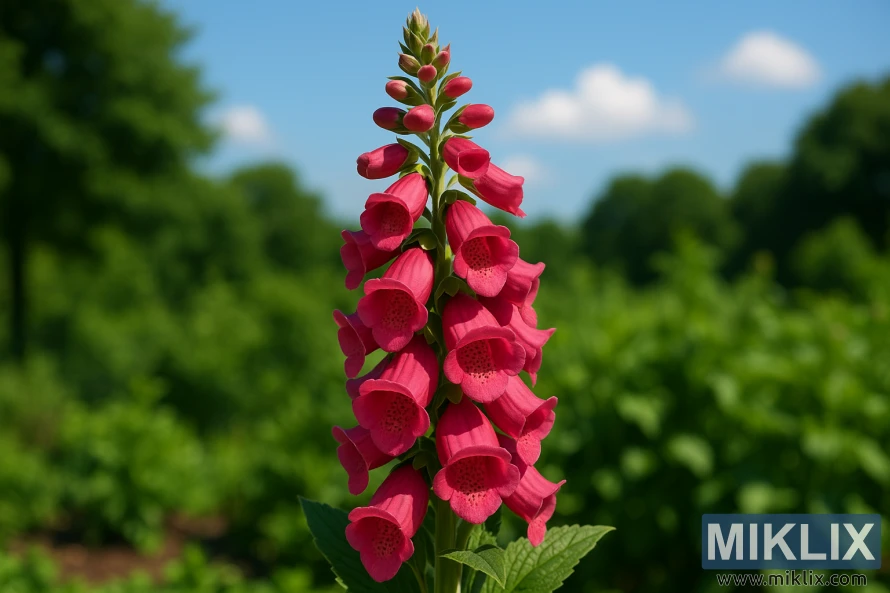
5. 'Camelot Lavender' (Digitalis purpurea 'Camelot Lavender')
Part of the popular Camelot series, 'Camelot Lavender' features elegant spires of lavender-purple flowers with heavily speckled throats. This variety blooms in its first year from seed, unlike many biennial foxgloves that make you wait until the second year.
- Height: 3-4 feet
- Spread: 1-2 feet
- Bloom Time: Early to midsummer
- Hardiness: Zones 4-9
- Special Features: First-year flowering, uniform growth habit
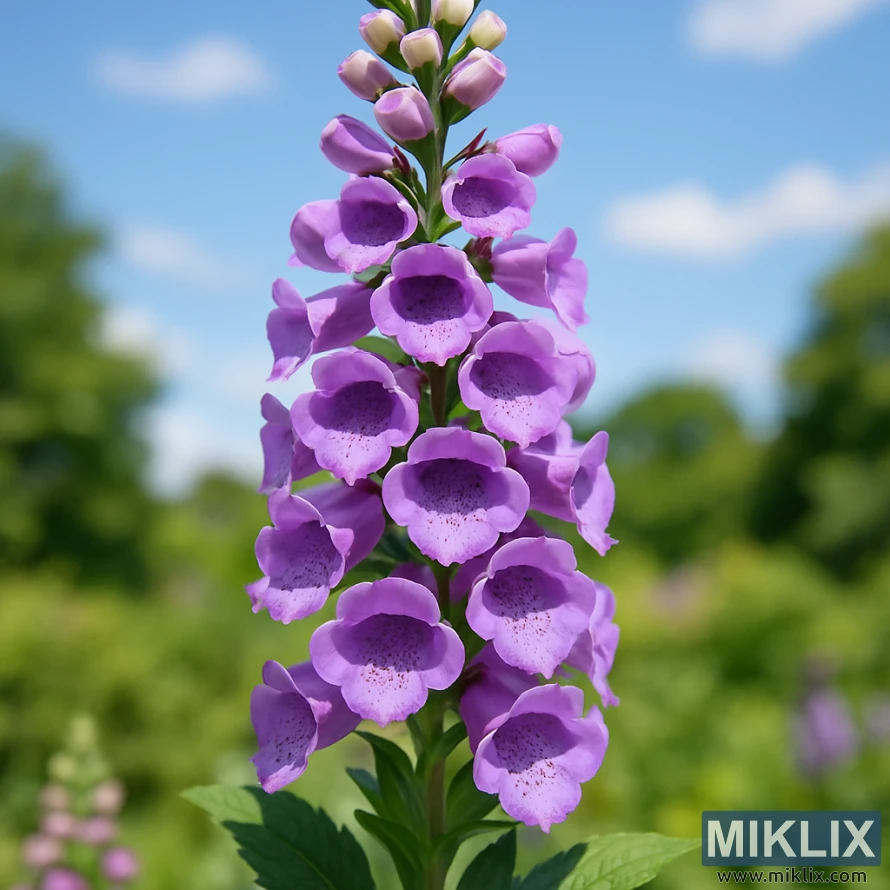
6. 'Dalmatian Purple' (Digitalis purpurea 'Dalmatian Purple')
Part of the Dalmatian series, this variety offers rich purple blooms on more compact plants than traditional foxgloves. Like others in the series, it flowers in its first year from seed and has a more uniform growth habit.
- Height: 1.5-2 feet
- Spread: 8-12 inches
- Bloom Time: Early summer
- Hardiness: Zones 5-9
- Special Features: Compact size, first-year flowering, container-friendly
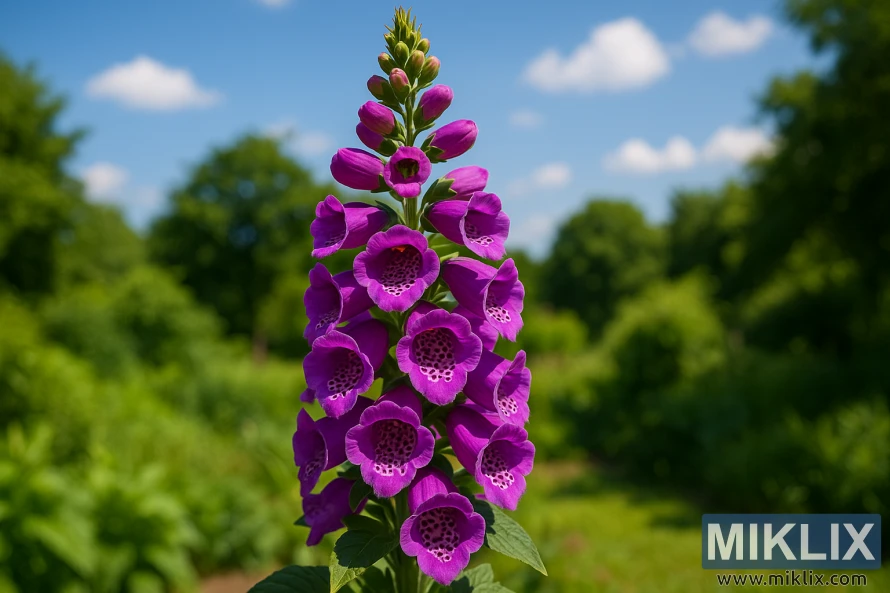
7. Yellow Foxglove (Digitalis grandiflora)
Unlike the common foxglove, Digitalis grandiflora is a true perennial species with pale yellow, bell-shaped flowers. The blooms are arranged on one side of the stem and feature attractive brown veining inside the throats.
- Height: 2-3 feet
- Spread: 1-1.5 feet
- Bloom Time: Late spring to summer
- Hardiness: Zones 3-8
- Special Features: True perennial, evergreen foliage, yellow blooms
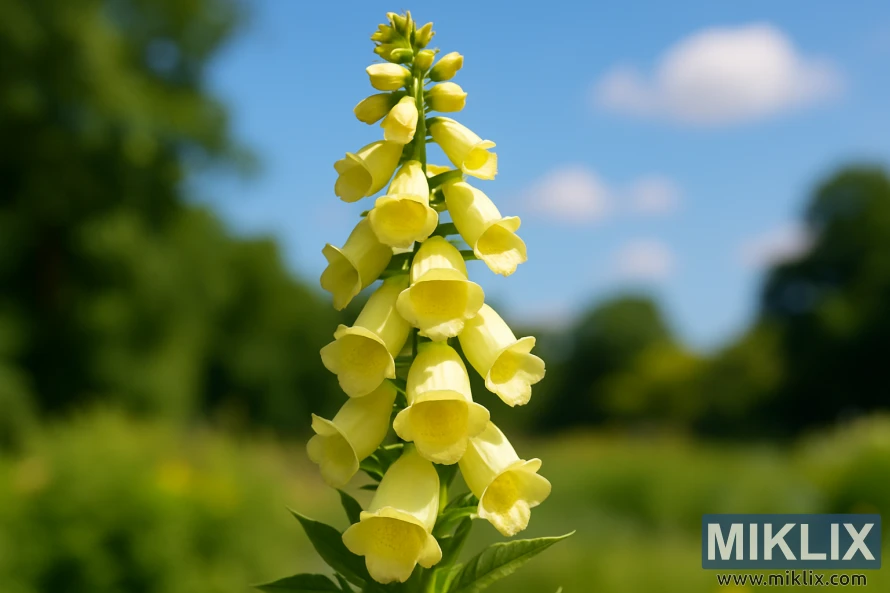
8. Rusty Foxglove (Digitalis ferruginea)
This architectural beauty features tall spires packed with small, rusty-orange to copper-colored flowers with intricate veining. The densely packed blooms create a distinctive, elegant appearance unlike any other foxglove variety.
- Height: 3-5 feet
- Spread: 1-1.5 feet
- Bloom Time: Early to midsummer
- Hardiness: Zones 4-8
- Special Features: Unique copper color, architectural presence
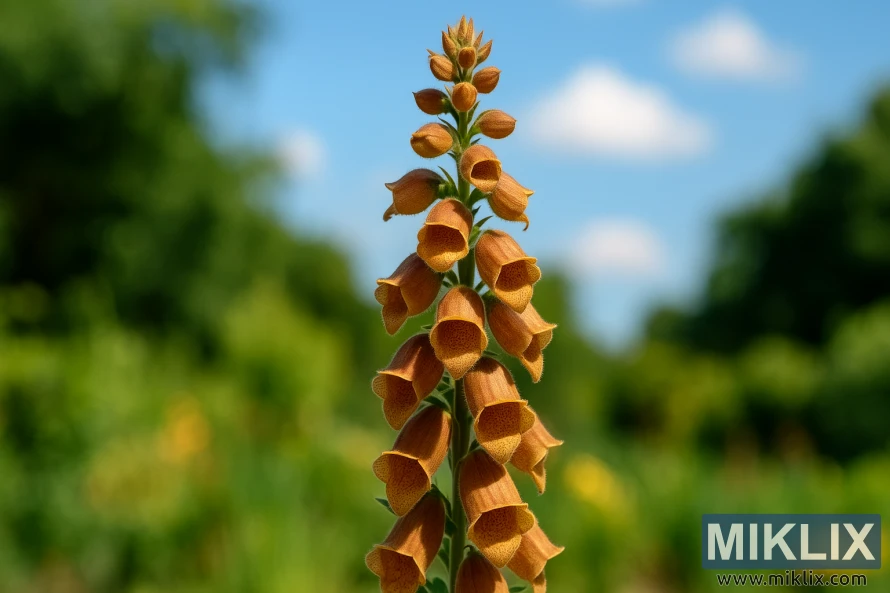
Designing with Foxgloves in the Garden
Companion Planting Ideas
Foxgloves pair beautifully with a variety of garden plants. Consider these companion planting combinations:
For Cottage Gardens
- Roses, especially old-fashioned varieties
- Hardy geraniums for ground-level color
- Delphiniums for additional vertical interest
- Lavender for contrasting texture
- Peonies for early summer overlap
For Woodland Gardens
- Ferns for textural contrast
- Hostas for broad-leaved interest
- Astilbes for feathery texture
- Bleeding hearts for early season interest
- Hellebores for winter and early spring blooms
Garden Styles for Foxgloves
Cottage Garden
The classic setting for foxgloves, where their informal, vertical spires add height and romance among roses, peonies, and other cottage favorites.
Woodland Garden
Foxgloves thrive in dappled shade, making them perfect for woodland settings where they can naturalize among ferns and shade-loving perennials.
Container Garden
Compact varieties like the Dalmatian series work well in large containers, bringing vertical interest to patios and small spaces.
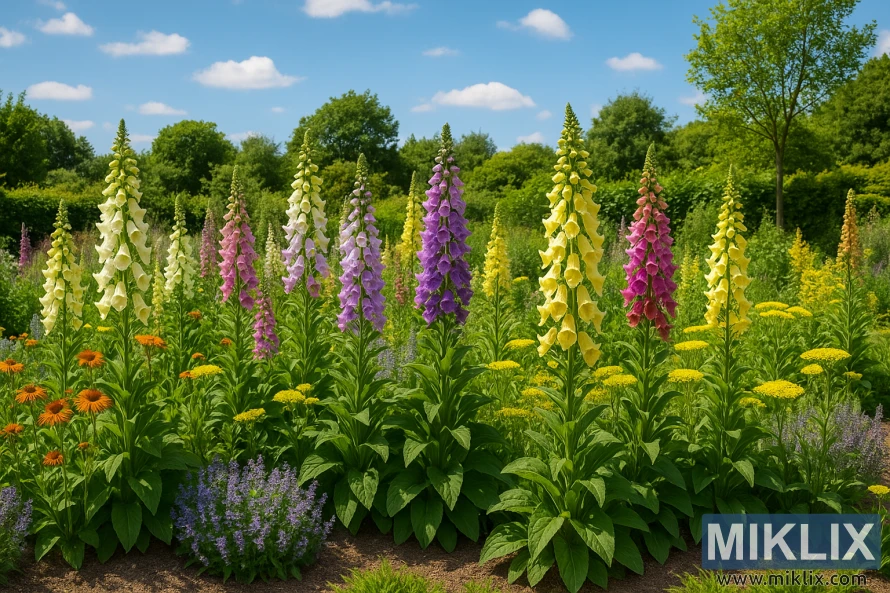
Growing Tips for Beautiful Foxgloves
Planting for Success
For the most beautiful foxglove display, follow these planting tips:
- Plant in spring or fall when temperatures are mild
- Space plants 12-24 inches apart, depending on variety
- Prepare soil with compost or well-rotted manure before planting
- Plant at the same depth as the nursery container
- Water thoroughly after planting and apply a 2-inch layer of mulch
Maintenance Through the Seasons
Keep your foxgloves looking their best with these seasonal care tips:
- Spring: Apply a balanced fertilizer as new growth appears
- Summer: Deadhead spent flowers to encourage more blooms
- Fall: Cut back flowering stems but leave basal rosettes intact
- Winter: Apply a light mulch around the base in cold regions
Propagation Methods
From Seed
The easiest method for most foxgloves. Collect seeds from spent flowers or purchase them. Sow on the surface of moist seed-starting mix and don't cover as they need light to germinate. Keep at 60-65°F (15-18°C).
Division
For perennial varieties, divide plants in early spring or fall. Dig up the clump, separate into sections ensuring each has roots and shoots, and replant immediately.
Basal Cuttings
In spring, take 3-4 inch cuttings from the base of the plant. Remove lower leaves, dip in rooting hormone, and plant in a mix of perlite and potting soil.
Will foxgloves grow well in containers?
Yes, foxgloves can thrive in containers, especially the more compact varieties like the Dalmatian series. Use a large container (at least 12 inches deep) with good drainage and high-quality potting mix. Keep the soil consistently moist but not waterlogged. In containers, foxgloves may need more frequent watering and fertilizing than those planted in the ground.
How do I prevent foxgloves from becoming invasive?
To prevent foxgloves from self-seeding too vigorously, deadhead the flowers before they set seed. If you want some self-seeding but not too much, remove most but not all of the spent flower stalks. In regions where foxgloves are known to be invasive (particularly the Pacific Northwest), consider growing them in contained garden beds or choosing sterile hybrid varieties.
Are there any non-toxic alternatives to foxgloves?
If toxicity is a concern, consider growing foxglove beardtongue (Penstemon digitalis), a North American native that resembles foxglove but isn't toxic. Other non-toxic alternatives with similar vertical growth habits include snapdragons (Antirrhinum), Veronica spicata, and Liatris spicata.

Conclusion
With their dramatic vertical form and beautiful tubular flowers, foxgloves are garden standouts that deserve a place in almost any garden design. Whether you choose the classic purple spires of common foxglove, the peachy tones of 'Sutton's Apricot,' or the architectural presence of rusty foxglove, these beautiful plants will add height, color, and pollinator appeal to your garden.
Remember to respect their toxic nature by planting them away from areas frequented by children and pets, and always wear gloves when handling them. With proper placement and care, foxgloves will reward you with some of the most beautiful and dramatic flowers in the summer garden.
Further Reading
If you enjoyed this post, you may also like these suggestions:
- A Guide to the Most Beautiful Tulip Varieties for Your Garden
- A Guide to the Most Beautiful Varieties of Black-Eyed Susan to Grow in Your Garden
- Top 15 Most Beautiful Rhododendron Varieties to Transform Your Garden
